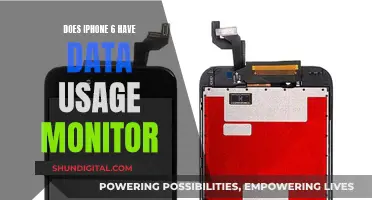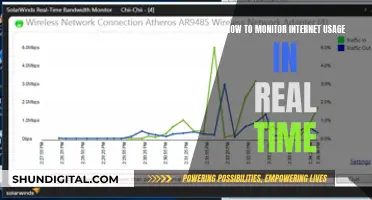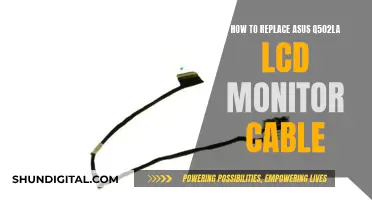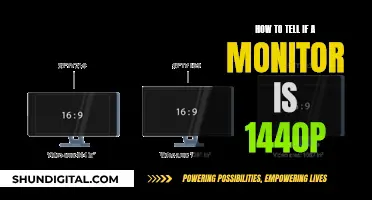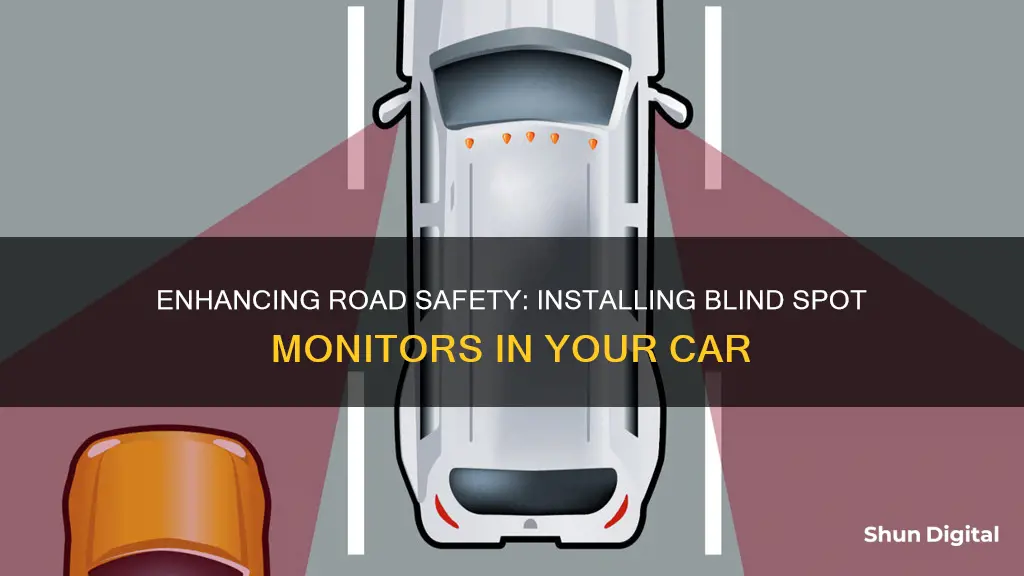
Blind spot monitoring (BSM) is a safety feature that has become increasingly common in newer cars. It can help to prevent lane change accidents by alerting drivers to vehicles in their blind spots. While some cars come with built-in BSM, others do not, and aftermarket BSM systems are available. These systems can be sensor-based or camera-based. Sensor-based systems use ultrasonic sensors mounted on the rear of the car to detect vehicles in your blind spots, while camera-based systems use a small camera mounted on the side of the car to detect vehicles in your blind spots. Both types of systems have their pros and cons, and the best option for you will depend on your budget, DIY skills, and your car's features.
What You'll Learn
- Sensor-based systems: Ultrasonic sensors on the rear of the car detect vehicles in blind spots
- Camera-based systems: A small camera on the side of the car detects vehicles in blind spots
- Blind Spot Detection (BSD): Notifies the driver if a car is in the blind spot area
- Lane Change Assist (LCA): Alerts the driver if a vehicle is in the BSD detection area when changing lanes
- Active Overtaking Alarm (AOA): Notifies the driver if cars are in the blind spot area while passing another vehicle

Sensor-based systems: Ultrasonic sensors on the rear of the car detect vehicles in blind spots
Sensor-based systems are a type of aftermarket blind spot monitoring system that can be added to your car to enhance safety and driver confidence. These systems use ultrasonic sensors mounted on the rear of the car to detect vehicles in your blind spots.
Ultrasonic sensors emit short ultrasonic impulses that are reflected by obstacles. The sensors detect distances to obstacles and monitor the space during parking and maneuvering. The ultrasonic sensor detects small obstacles starting from 4-10m away, and big obstacles starting from 15m away. The system will then alert you with an LED light in your side mirror or a beep from inside the car.
The basic variant of blind spot detection can be implemented using ultrasonic sensors or corner radar sensors. The function uses the sensors to cover the dangerous blind spot area. If another vehicle is in the monitored area, the driver is alerted to the potential danger by means of a warning sign in the side mirror. If the driver fails to spot or ignores this warning and activates the turn signal, the system can trigger an additional warning.
The ultrasonic blind spot detection system typically consists of two ultrasonic sensors, a harness for power and sound, and two indicator LED lights. The sensors are usually mounted on the left and right sides of the rear bumper, and the cameras are placed in the side-view mirror housings. The system can be purchased as a kit and installed by following the included instructions, although professional installation is recommended.
Setting Up 100Hz on Your ASUS ROG Curved Monitor
You may want to see also

Camera-based systems: A small camera on the side of the car detects vehicles in blind spots
Camera-based blind spot monitoring systems are an effective way to enhance your driving experience and safety. These systems use a small camera mounted on the side of your car to detect vehicles in your blind spots, providing a clearer view of what's in those unseen areas. While they can be more expensive and challenging to install, they offer a more accurate view than sensor-based systems.
When choosing a camera-based system, consider your budget and DIY skills. These systems typically cost upwards of $300, so they may be pricier than sensor-based options. Additionally, they usually require professional installation due to their complexity. If you're comfortable working on your car, you may attempt it yourself, but be prepared for a more intricate process than with sensor-based systems.
To install a camera-based blind spot monitoring system, you'll need to carefully follow the instructions provided with the kit. Here are some general steps to give you an idea of the process:
- Mount the camera on the side of your car, ensuring it has a clear view of the blind spot area.
- Route the camera's wires to the inside of your car. This may involve drilling a small hole to access the interior.
- Install the display unit, typically on your dashboard or rearview mirror, where you can easily view it while driving.
- Connect the camera's wires to the display unit and power supply.
- Test the system to ensure it's functioning correctly.
It's important to note that while camera-based systems provide valuable assistance, they should not replace safe driving practices. Always use your mirrors and perform shoulder checks before changing lanes. Additionally, regularly clean your camera to ensure it's free of dust, dirt, or other obstructions that may impact its performance.
By installing a camera-based blind spot monitoring system, you'll gain increased driving awareness, reduced stress levels, and improved response time. This technology can be especially beneficial for larger vehicles with more significant blind spots. Remember to research different kits and choose one that suits your specific vehicle and preferences, such as visual and audio signals.
Monitor Broadband Usage: A Guide for BSNL Users
You may want to see also

Blind Spot Detection (BSD): Notifies the driver if a car is in the blind spot area
Blind Spot Detection (BSD) systems are a type of advanced driver assistance system (ADAS) that can notify the driver if another vehicle has entered their blind spot and is at risk of a collision. BSD systems use radar, ultrasonic sensors, or cameras to detect vehicles in the driver's blind spots, and typically alert the driver with a visual indicator in the side mirror or an audible warning.
BSD systems are calibrated to monitor areas that are difficult or impossible to see using only the side-view mirrors. They are designed to help prevent accidents between vehicles in adjacent lanes moving in the same direction. The system supplements mirrors, giving drivers an added layer of safety.
BSD systems are mainly designed for highway use and high speeds. Each BSD system has a maximum speed differential limit, which means that if a vehicle beside you is travelling significantly faster than you, the system cannot detect it. Additionally, the sensors of a BSD system should be kept clean to function effectively.
There are two main types of aftermarket BSD systems: sensor-based systems and camera-based systems. Sensor-based systems use ultrasonic sensors mounted on the rear of the car to detect vehicles in the blind spots, while camera-based systems use a small camera mounted on the side of the car to provide a feed that is displayed on the dashboard or rearview mirror. Sensor-based systems are generally less expensive and easier to install, but camera-based systems can provide a clearer view of the blind spot.
When choosing an aftermarket BSD system, consider factors such as your budget, DIY skills, and the features of your car. Sensor-based systems typically cost between $50 and $100, while camera-based systems can cost upwards of $300. If you are not comfortable with car repairs, you may want to have a professional install the system for you. Additionally, check your car's manual to see if it has pre-wiring for blind spot monitoring, which can make installation easier.
To install a sensor-based BSD system, follow these general steps:
- Mount the sensors on the rear of your car, near the corners of your bumper and away from any obstacles.
- Route the wires from the sensors to the inside of your car. You may need to drill a small hole in the firewall.
- Install the control unit under the dashboard.
- Install the LED lights or other warning indicators, typically on the inside of your side mirrors.
- Connect the wires from the sensors and the control unit to the power supply in your car.
For a camera-based system, the installation process is more complex and typically requires a professional. However, some aftermarket blind spot monitoring systems can be installed by the user and may come with specific instructions that should be followed.
Keystroke Monitoring: Is Your Boss Watching Your Every Move?
You may want to see also

Lane Change Assist (LCA): Alerts the driver if a vehicle is in the BSD detection area when changing lanes
Lane Change Assist (LCA) is an Advanced Driver Assistance System (ADAS) technology that helps drivers change lanes safely. It is a valuable feature that can prevent accidents and improve overall driving confidence.
LCA uses sensors to detect vehicles in adjacent lanes, alerting drivers through visual, auditory, or tactile signals. This technology is especially useful when busy roads make it challenging to keep track of nearby vehicles. LCA systems typically consist of two control units coupled with an integrated radar sensor. Millimeter-wave radars emit high-frequency electromagnetic waves, which bounce off objects and return to the sensor, providing data on the location, size, speed, and direction of nearby objects.
There are two main types of LCA systems:
- Warning-based LCA: This system provides warnings to the driver without taking control of the vehicle. When a driver signals a lane change, the system checks for vehicles in the corresponding blind spots. If changing lanes is unsafe, the system alerts the driver through visual, auditory, or tactile signals.
- Active Lane Change Assist: This system automates steering and speed control during lane changes. It requires the activation of other Advanced Driver Assistance Systems (ADAS), such as Adaptive Cruise Control (ACC) and Lane Keeping Assist (LKA), to achieve level 2 automation. With these systems in place, Active Lane Change Assist can adjust the vehicle's steering and speed to complete the lane change without driver input beyond signalling.
It is important to note that LCA systems usually require activation through the use of turn signals. Additionally, professional calibration is crucial after specific events like collisions or sensor repairs to ensure accurate functionality.
LCA is available from various car brands, including Cadillac, BMW, Audi, Porsche, Subaru, and Mercedes.
How VMware's Hardware Usage Monitor Optimizes Performance
You may want to see also

Active Overtaking Alarm (AOA): Notifies the driver if cars are in the blind spot area while passing another vehicle
The Active Overtaking Alarm (AOA) is a feature of aftermarket blind spot monitoring systems. It notifies the driver if there are vehicles in their blind spot while they are passing another vehicle, helping to prevent accidents and minimise the risk of collisions.
Aftermarket blind spot monitoring systems are a great addition to older vehicles that may not have this technology installed. They can increase driving awareness, improve response time, and make drivers and passengers feel safer.
The AOA feature is an important part of a blind spot monitoring system, as it provides an early warning to the driver, allowing them to make informed decisions and take appropriate action. This is especially useful when changing lanes or overtaking, as it can help prevent accidents and improve overall safety on the road.
The system typically uses sensors and/or cameras to detect vehicles in the blind spot and will alert the driver through visual and/or audible notifications. Visual alerts may include LED lights in the side mirrors or on the dashboard, while audible alerts could be in the form of a beeping sound or an alarm.
It is important to note that while blind spot monitoring systems can be extremely helpful, they should not be solely relied upon. Drivers should still practice safe driving habits, such as using mirrors and checking their blind spots manually. Additionally, it is recommended to consult a professional for installation, as proper placement of sensors and components is crucial for the system's accuracy and effectiveness.
LCD Monitors: Unveiling the Myths and Misconceptions
You may want to see also
Frequently asked questions
An aftermarket blind spot monitor is a system that can be added to your car to notify you if another vehicle has entered your blind spot, helping to prevent lane change accidents and collisions.
A blind spot monitor uses sensors or cameras to detect vehicles in your blind spot. When a vehicle is detected, the system will alert you with a visual or audible warning, such as an LED light or a beeping noise.
You can install a blind spot monitor yourself, but it is recommended to get it professionally installed. The process involves mounting the sensors on the rear of your car, routing the wires, installing the control unit, and setting up the warning indicators.


